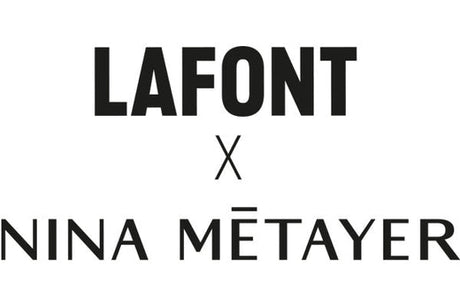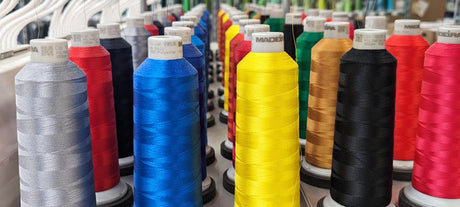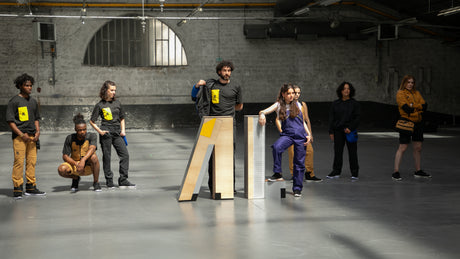- Why are overalls blue?
- Who is its inventor and when was it designed?
- To what extent has this work clothing become democratized?
- Why has it become essential today in many sectors of activity?
Lafont has investigated for you!
Why are work overalls blue?
Work clothing is still widely associated with “work overalls” today. It was formerly dedicated to manual and industrial trades. Today widely diversified, it responds to the problems of many sectors of activity. Although the use of the term “work blue” may seem to be running out of steam, it is still widely overused. So where does this name come from? Beyond the color, why was it called that?
A little detail on the color of work overalls
The origin of the name “working blue” comes from its color, Prussian blue. (It is also called Berlin blue because of its city of origin).
The conditions of its discovery remain quite vague because 2 anecdotes are exposed:
- The color was discovered accidentally by a German painter named Heinrich Diesbach in the early 1700s. A dishonest chemist wronged the painter by improving and then commercializing the recipe for his own profit.
- The color was discovered accidentally between 1704 and 1707, in Berlin, by the color manufacturer Johann Jacob Diesbach.
-

Ultimately, big profits were made from a simple mistake. At the time, the use of dark blue was regulated by commercial laws. Being difficult to produce and fix, its use was far from economical. The composition of Prussian blue, this very deep blue pigment, was jealously guarded for a long time because of its low manufacturing cost. It is this last reason which explains its massive use for the production of the first work clothes. The color blue has become the symbol of work clothing, even giving it its name.
NB: The color blue has given its name to other work clothing, such as the blouse (taken from the English blue).Mass development for industrial and manual professions
The discovery of Prussian blue played a very important role in the popularity of blue. In the 18th century, this color very quickly became universal and timeless. Having become very fashionable and already used in maritime, military professions or even by postmen, this color had the advantage of being inexpensive to manufacture and easily cleanable due to its dark appearance. When work clothing developed in France, the objective of manufacturers was to reduce the manufacturing costs charged to companies. “Prussian Blue” seemed obvious.
A work overall, what for?
Overalls, “the worker’s uniform”
The primary role of overalls was to protect workers from the risks identified in their sector of activity. The reasons for wearing it were multiple and allowed you to work in good conditions:
- Safety: workers were protected against possible injuries. A building professional thus avoided dirt, splashes and bad weather. Later, work clothing established itself in many fields: health professions protected themselves against microbes; food professions against cold and heat.
- Practicality and functionality: the outfit is made up of numerous pockets and represents a real time saving when getting dressed.
- Cleanliness and hygiene: the worker could protect his personal clothing while wearing clean, healthy and dirt-repellent clothing.
- Team uniformity: uniformity common to all employees of a company to improve the feeling of belonging.

This work clothing quickly became that of workers. Sometimes poorly received, because perceived as a social label: “work overalls, the worker's uniform, work in the factory”, it ended up being imposed by the unions. To distinguish themselves from the workers, superiors often wore their clothing in a different color, either white or gray.
NB: The expressions “ blue collars ” and “ white collars ”, taken from this era, are still used today.Who invented overalls?
Today worn by millions of workers in dozens of sectors of activity, the development of work overalls was above all a response to the industrial revolution. Flashback to the rise of this outfit!
1789, the industrial revolution begins. Society is witnessing the growth in the production of consumer goods and the pooling of businesses and services. The advent of new machine tools risks generating numerous accidents. The apron, used in the exercise of many trades in the past, often made of leather or heavy cotton, was no longer sufficient to ensure the protection of workers. The end of the 19th century marked the end of the industrial revolution and the development of work clothing. With the compulsory wearing of traditional protective clothing, we see the beginnings of workplace safety standards emerging.
Little by little, the suit is abandoned for a more functional uniform composed of two pieces: a jacket and pants. Some work clothing manufacturers then designed pieces that would become emblematic: the jacket, the broadot (carpenter's pants), the overalls and its ruler pocket, invented by Lafont.
Used for a long time in factories, work overalls came out of the ranks in 1968 to dress students at major schools. It was then tamed by recognized designers, such as Dior.Who is affected by wearing work overalls?
First worn in industrial trades and general mechanical workshops, this work clothing quickly became widespread. Initially, overalls were acquired by each employee with their own means. Around 8 million people in France were affected. The demonstrations led by the unions and the wage demands will change things. Subsequently, it is the company itself that will provide work clothing to its employees.
From work overalls to today's professional outfit
Today, professional clothing and personal protective equipment still represent a major challenge, both on a human and economic level. Today, work clothing manufacturers offer products that adapt to each sector of activity according to the constraints specific to each area and respecting the rules of comfort, resistance and design.









